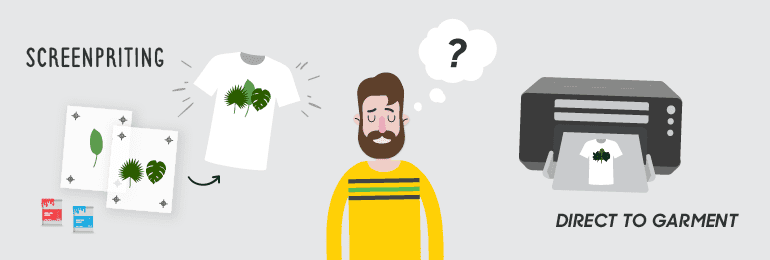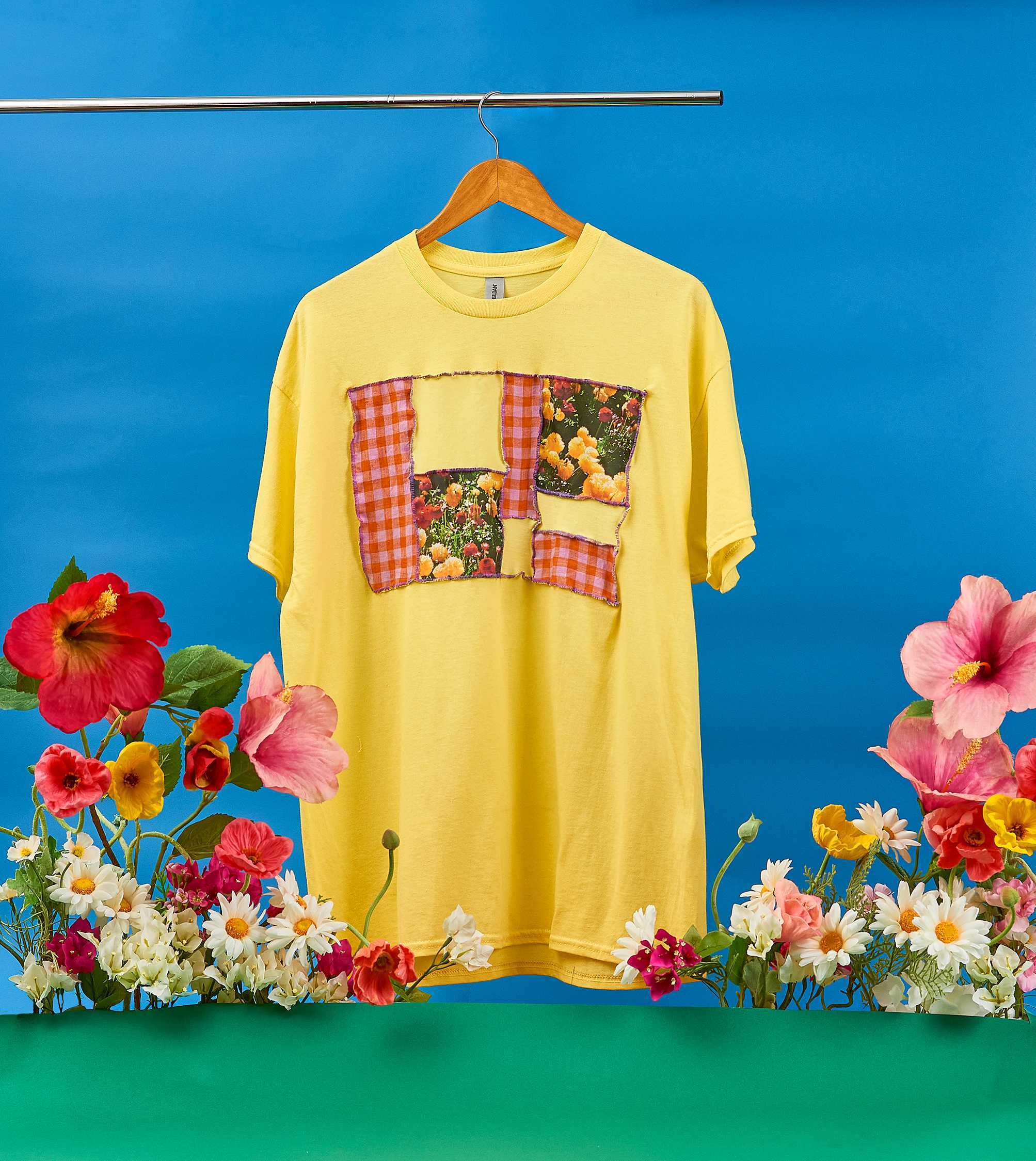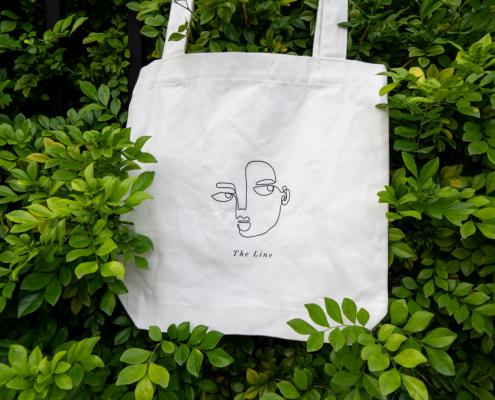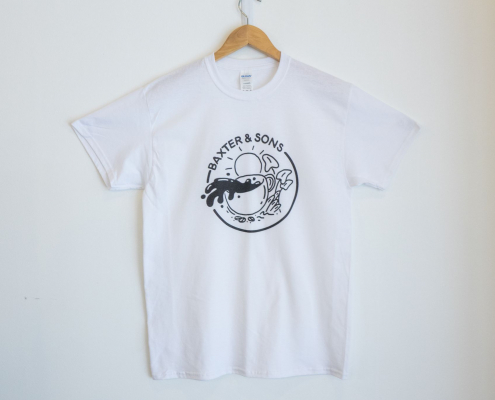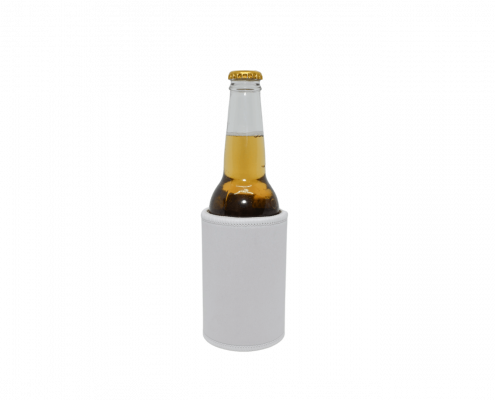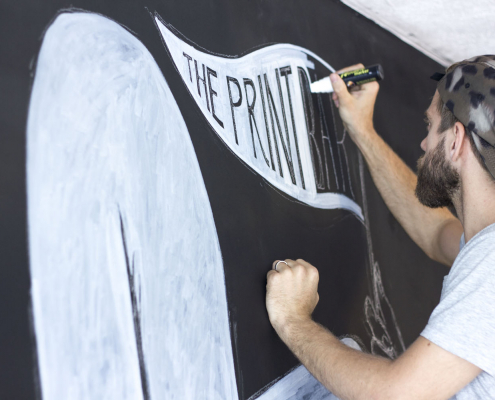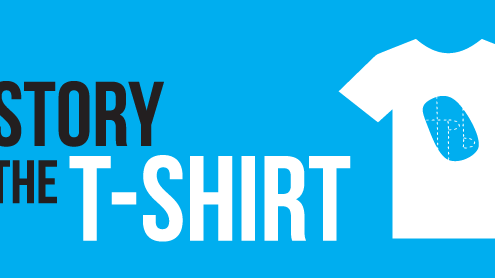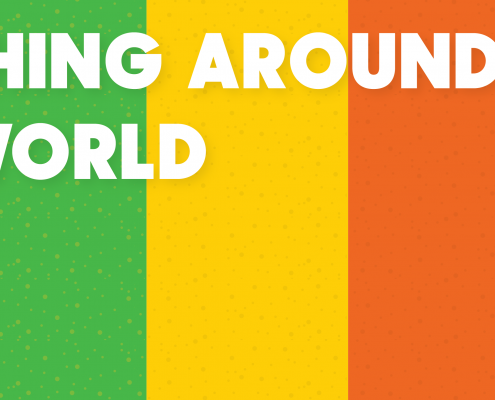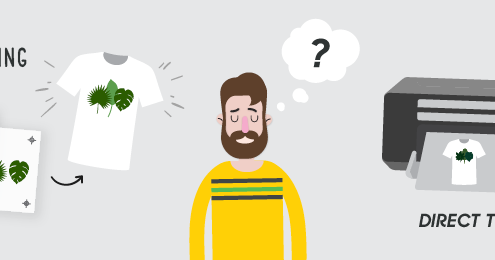T-shirt printing has evolved dramatically over the years. With advancements in technology and new approaches to creating products, including t-shirts, there are now lots of different ways to design a shirt and create a quality product. Digital printing and screen printing are two of these methods.
So what makes the two different?
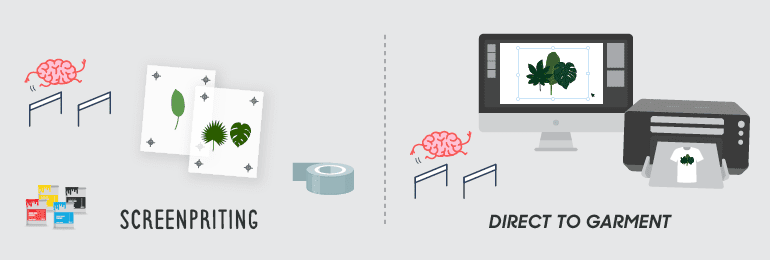
Tools
Screen printing requires a number of different tools to create the final product. First a stencil, then the print, then attaching to a screen and placing this on the desired canvas (or shirt) and finally using ink to create the print. Tools include everything from a silk screen, squeegee and inks to exposure units, vector artwork, carousel and heat tunnel. With digital printing, you need a trusty computer with Photoshop, the digital artwork, a Direct To Garment Machine and heat press, a t-shirt and the right ink and you’re good to go!
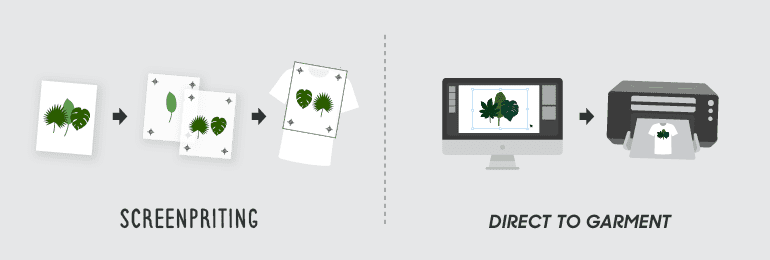
Efficiency
Digital printing and screen printing are two different methods of printing for different purposes. Digital printing is a super quick method for one-off print jobs or artwork with a lot of colour or detail. This is because the set up and clean up time when screen printing can be time consuming if you only need one shirt or a print with a wide range of colours and gradients.
Screen printing is the king of efficiency if you are printing a bulk unit with simple artwork of a few colours. Even though time is taken to set up and clean up, the time to screen print larger orders can take a third of the time to print a job in comparison to digital printing. The shirts can literally fly off the press (or carousel in this case!).
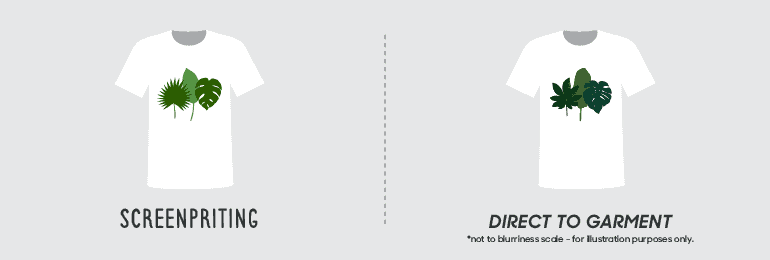
Quality
There are some artworks you just can’t screen print, like photographs of your family on holiday or space cats riding rainbow spaceships. The quality of prints for digital printing and screen printing vary in feel and longevity, with different methods for different purposes.
Screen printing is great as it allows you to Pantone match your inks for printing, including metallics and neons. It’s also a method that enables you to print on almost any surface. The prints also generally last forever!
Digital printing machines can process a beautiful range of colours, but like your printer, at home, you aren’t able to print metallics, neons and Pantone colours. Due to the digital printing inks (which are vegan, OEKO Tec certified and 100% ecofriendly) printing is limited to organic fabrics. Like all digital prints, the print will fade over time and wear with the fabric.
There is also a difference in the feel of the prints. General screen print inks will sit onto of the fabric and, depending on the type of fabric printed on, will be very smooth or a little rough. Digital prints on white garments will typically feel part of the fabric and very soft, but smooth and more prominent on darker or coloured garments. Check out some examples of digital prints and screen prints here.
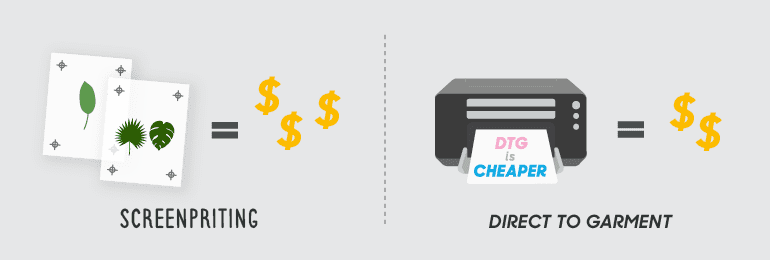
Cost
One of the most important factors – everyone is worried about cost! If you’re looking for some bulk printing with simple artwork, you can’t go past screen printing, which is much cheaper per unit for large orders. The more colours you have in your design, however, the higher the screen set up fee will go.
Digital printing doesn’t require any screen set up fees, so for smaller units it is much more economical. The price doesn’t drop too drastically if you are needing hundreds of units and your shirts will be very colourful.
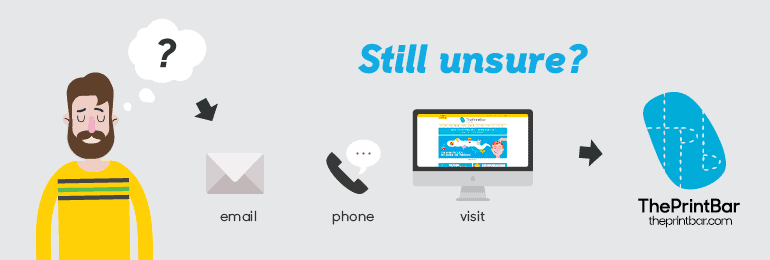
At The Print Bar, we like to live on the wild side! We understand the benefits of both screen printing and digital (Direct To Garment) printing and like to give you lots of options. To find out more about our bulk t-shirt printing or to design a shirt, head online or call The Print Bar on (07) 3357 4555 today.

